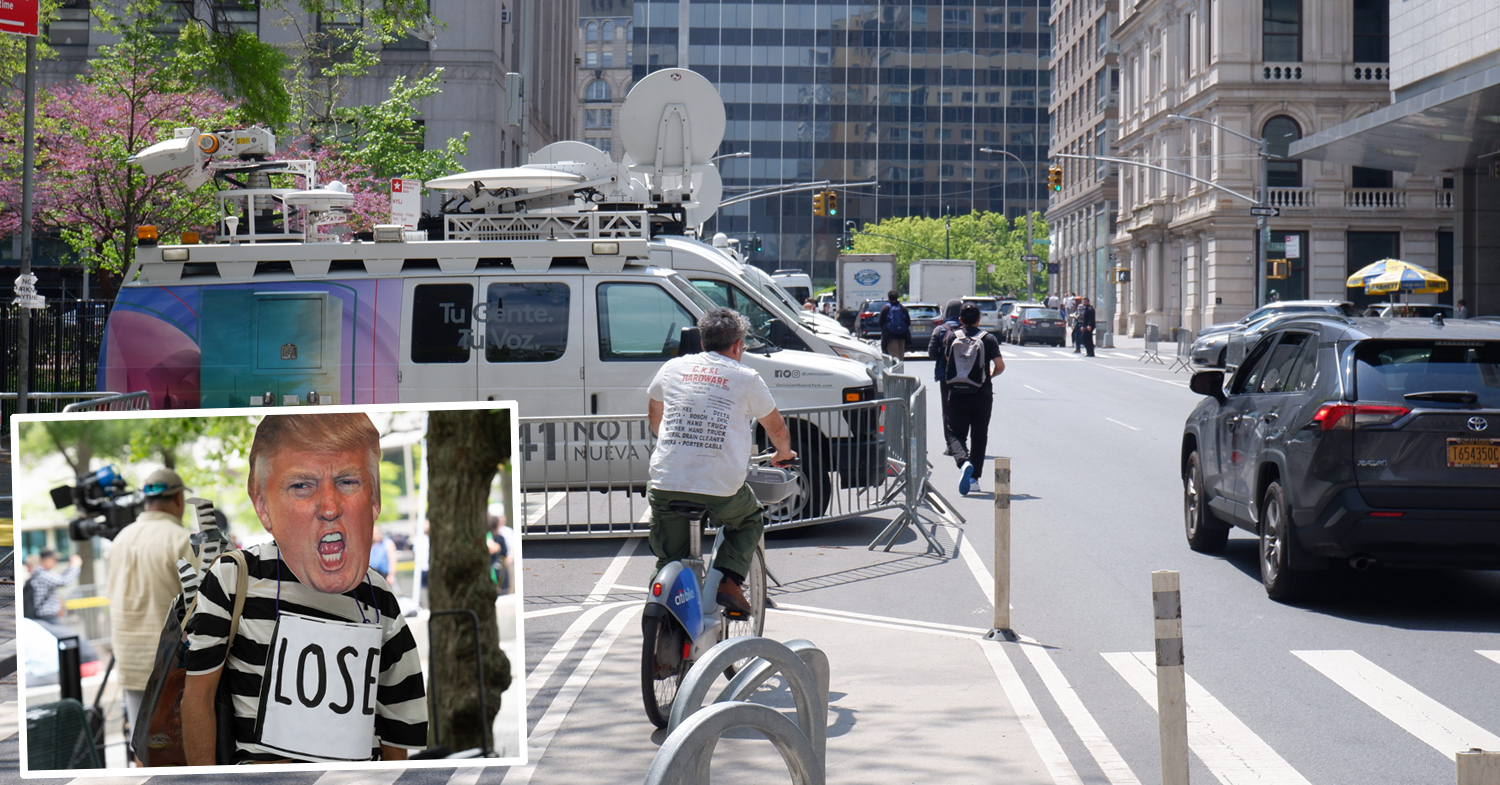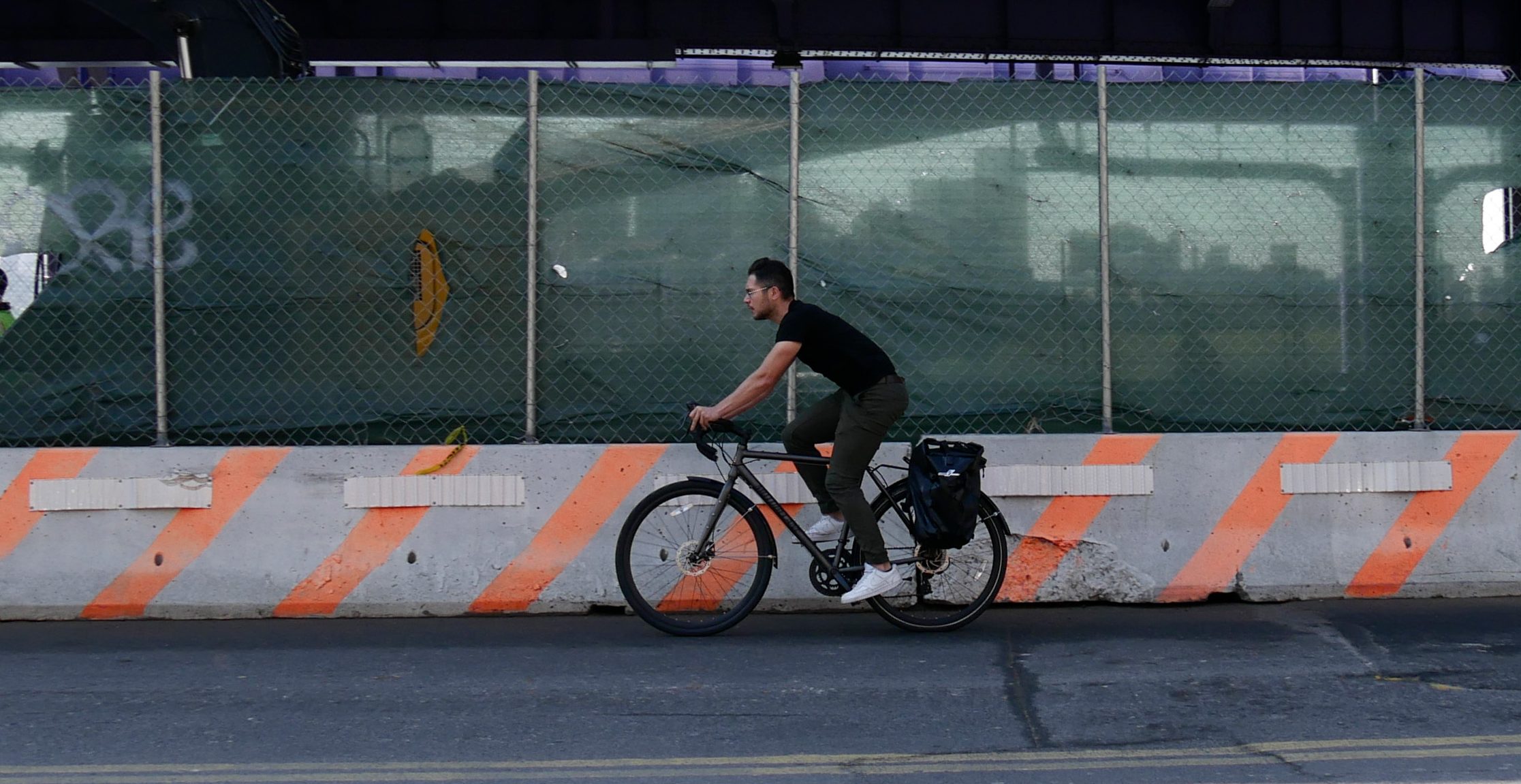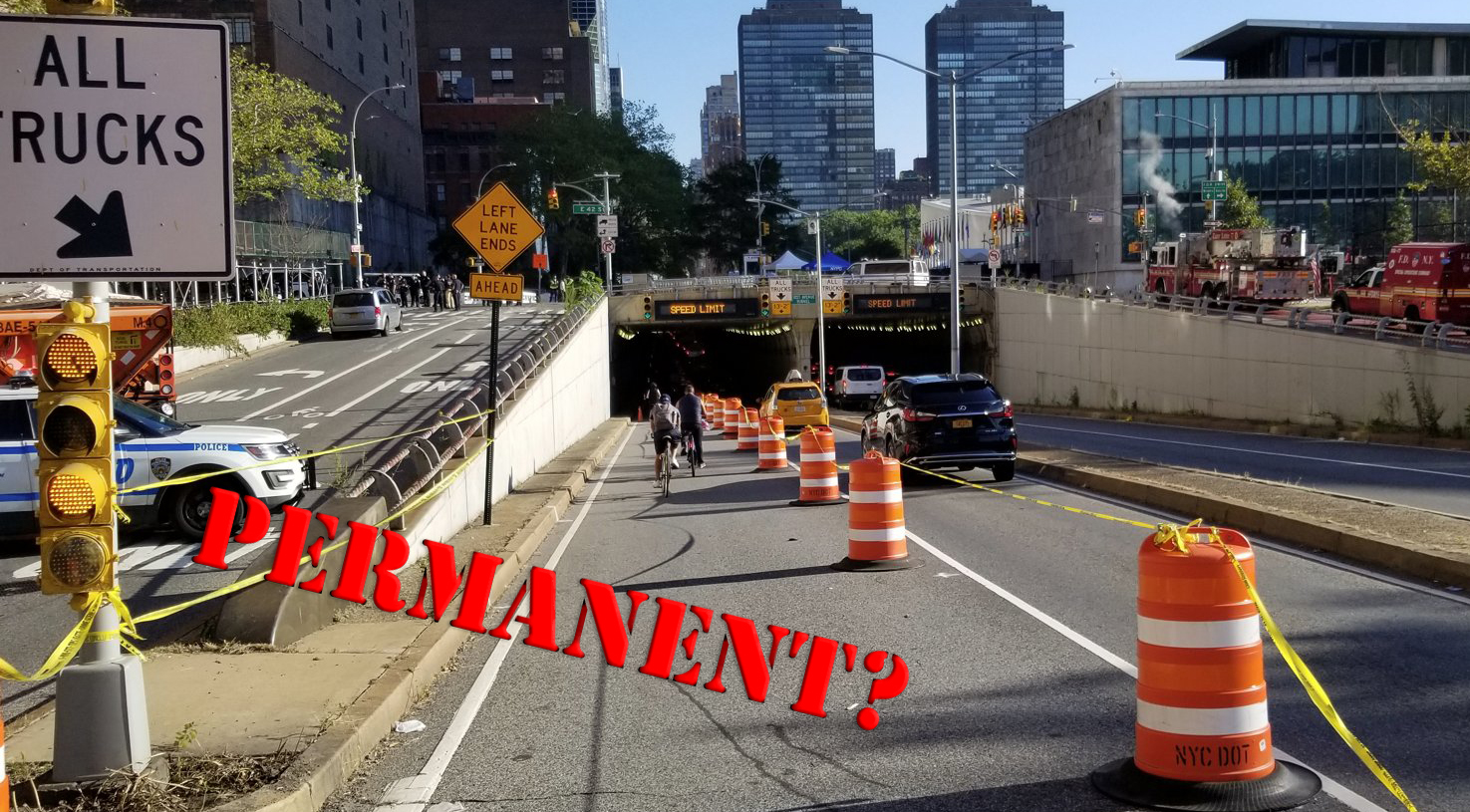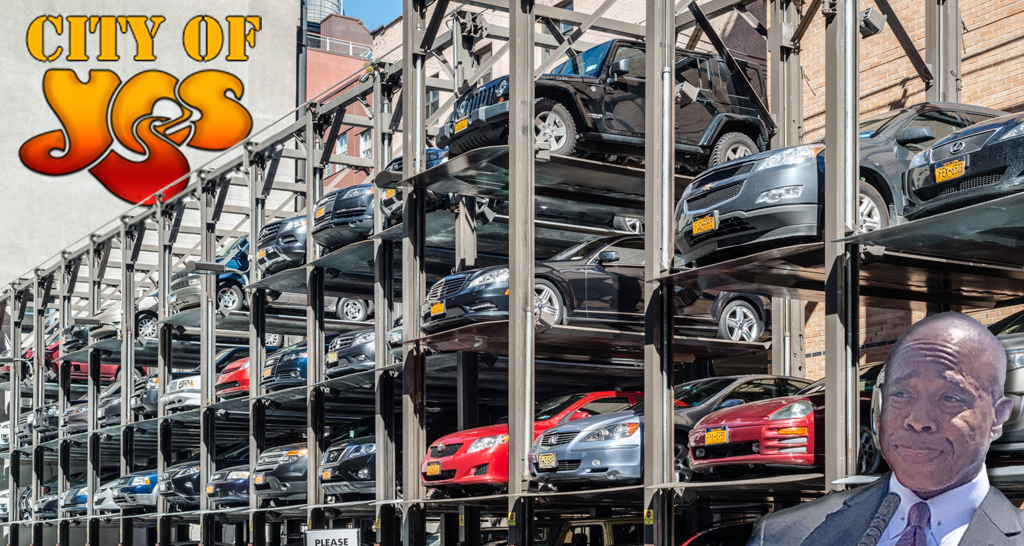OPINION: The Cost of ‘Free’ Parking is Dirty Streets and Foul Air
Our policy of forcing cars to move for street cleaning has many hidden costs, most notably the environmental effects of trading clean streets for polluted air.
11:00 AM EDT on March 21, 2022
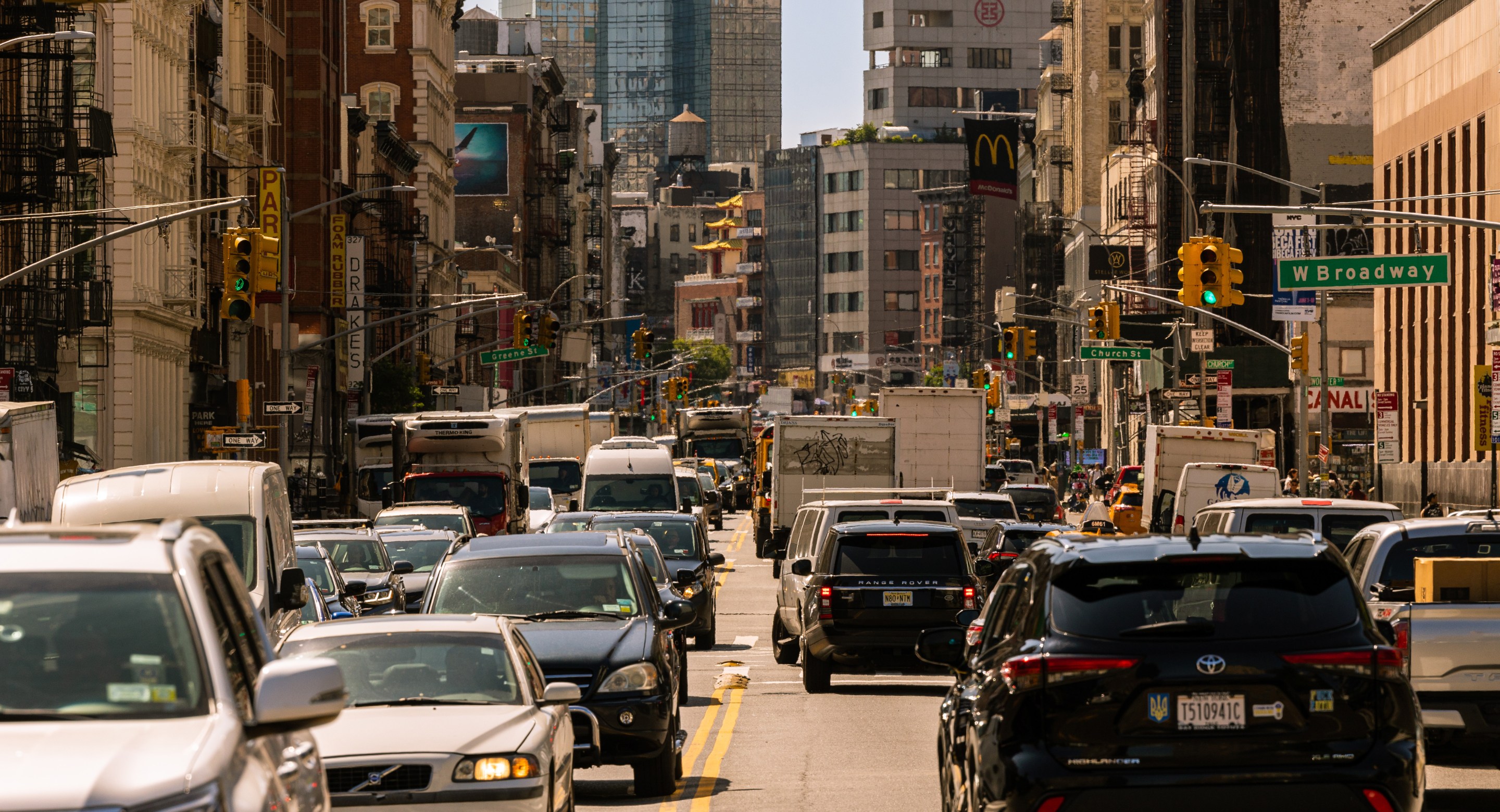
In talking about the difficulty of cleaning streets at a March 4 City Council budget hearing, Sanitation Commissioner Ed Grayson mentioned that “for some drivers, the risk of a $65 ticket once a week is simply the cost of free parking on the city’s streets.”
Yes, we should raise ticket prices in order to ensure that car owners move their vehicles to allow for street cleaning. But the more telling part of Grayson’s remark was in the last part of the sentence: “the cost of free parking on the city streets.”
Even with the reduced frequency since the pandemic, our policy of forcing cars to move for street cleaning has many hidden costs, most notably the environmental effects of trading clean streets for polluted air. And not only clean air. Studies have found that fully 30 percent of total miles driven on city streets are by people looking for free parking (for any reason, not just because of alternate-side rules, but those rules are a big cause). How many crashes, injuries and even fatalities result?
We need an alternative to free “alternate-side parking” — one that prices out curbs fairly and allows us to keep our streets clean, too.
Manhattan Community Board 7 passed a resolution in February 2020 calling on the Department of Transportation to “assess current policy regarding parking and curbside usage” and “advise … as to whether there are policies that could provide greater benefit to the community, improve traffic flow and promote safer streets, including, but not limited to, paid residential parking permits, metering with surge capability and strategies learned from studying the practices of other major cities.”
The pandemic set the DOT back in responding to the resolution, but I hope Mayor Adams and DOT Commissioner Ydanis Rodriguez see the priority of exploring ways to improve the way we manage parking, especially given the environmental concerns.
It’s a matter of utmost importance that we ought to address now. With congestion pricing coming to Manhattan’s Central Business District in 2023, many residents worry that the neighborhoods adjacent to the area will become choked with out-of-town parkers. Moreover, the war in Ukraine, with the rise in gas prices, has scrambled the economics of car ownership in ways that might support a solution to this intractable problem.
Simple economics dictate that if you give away something valuable for free, demand will outstrip supply. With reserved parking spots costing $500 or more per month in many neighborhoods, people (myself included) go to great lengths to find free parking. As Donald Shoup wrote in the New York Times in 2007, “Like George Costanza, drivers often compare parking at the curb to parking in a garage and decide that the price of garage parking is too high. But the truth is that the price of curb parking is too low. Underpriced curb spaces are like rent-controlled apartments: hard to find and, once you do, crazy to give up. This increases the time costs (and therefore the congestion and pollution costs) of cruising.”
A 2017 study by the firm INRIX found that drivers in New York spend an average of 107 hours a year “cruising” for parking. Not only are car owners wasting an incredible amount of time, many negative externalities (the economic term for a cost that is suffered by a third party) accrue from giving away an incredibly valuable resource — space in New York City — to those who cruise around looking for empty spots, and to those who sit in their cars idling for up to 90 minutes waiting for spots to become legal. Plus, at a conservative estimate of a gallon an hour, 107 hours of driving translates into an average of an extra 2,500-plus pounds of global warming gas for every car parked on our streets, just for parking. INRIX calculated that the 107 hours a year of looking for parking cost $2,243 per driver in wasted time, fuel and emissions, amounting to $4.3 billion in costs to the city as a whole.
A great benefit of living in New York City, with its great (although not perfect) public transportation system and bikeable streets, is that many trips can be taken without a private car. A 2010 city report, “New York City’s Green Dividend,” calculated that the average miles driven per person per day in New York City was nine, just 36 percent of the average 25 miles per person per day in large U.S. metro areas. The study calculated that this avoided 48 billion miles of driving, reducing gasoline usage by 2.4 billion gallons, and carbon emissions by 23 million tons.
A 2018 NYC EDC report found that only 45 percent of households in New York City, and only 22 percent in Manhattan, had access to a car. Yet according to 2019 testimony by former DOT Commissioner (and now U.S. Deputy Secretary of Transportation) Polly Trottenberg, New York City has three million free parking spaces. In Curbed, Benjamin Kabak calculated this to be 500 million square feet of public space — the size of 10,000 football fields. (A football field is roughly an acre. Central Park is 843 acres, so about 16 Central Parks.)
Free parking encourages more New Yorkers to have cars and more out-of-towners to travel to the city by car. Even as many people expect that public transportation must pay for itself, general taxpayers provide much of the funding for private cars, not just in road construction and the giving away of public space for free to private cars — but also in our dependence on oil. The organization SAFE, which advocates for energy diversification, estimates that the U.S. military spends $81 billion a year protecting global oil supplies, a cost borne by all taxpayers, not just drivers. Nonetheless, when the price of gasoline rises because of Russia’s invasion of Ukraine (Russia is the world’s third-largest oil producer, producing 91 percent as much oil as Saudi Arabia), politicians call for suspending the gas tax, which is used to build roads. Suspending this tax and shifting the burden to general taxpayers would make non-drivers pay even more of the cost of road building.
Unfortunately, many city residents purchased cars during the pandemic, causing more competition for free spots, and making parking even harder. The New York Times last year reported a 76-percent increase in year over year car registrations from August to October 2020 to 2021 in Manhattan and 45 percent in Brooklyn. “It’s like ‘The Hunger Games’ for parking,” said one Brooklynite. “It’s not harder now — it’s relentless.” INRIX hasn’t updated its 2017 study, but one can imagine that New Yorkers are now spending even more than 107 hours a year driving around the block looking for parking.
Further, our streets aren’t even getting cleaned. With such fierce competition for parking, people who park their cars on the street must get to alternate-side spots ever earlier to stake a claim, often more than an hour before the spot becomes legal. Some drivers don’t move their cars at all. As Commissioner Grayson mentioned, with tickets costing only $65, it now costs less in many neighborhoods to leave a car on the street for a month, preventing street cleaning and getting four tickets, than it is to pay for a parking lot. Clearly, we need to dramatically raise the price of parking tickets!
As many have observed, even on relatively nice days, many people idle their engines for the entire hour-plus that they sit in their cars, meaning that our quest for cleaner streets directly causes polluted air. Recently, I have seen the street cleaners drive past all the idling and unmoved cars during the 90 minutes a week dedicated to street cleaning, unable to get to the curb, meaning that this process transpires without the streets even getting cleaned.
The New York Times recently reported that “eliminating excessive idling from personal vehicles alone would have a similar impact to taking 5 million of the country’s 250 million cars off the streets.” Yet alternate-side parking encourages thousands of drivers to idle for an hour or more at least once a week.
For all these reasons, let’s rethink our antiquated, injurious free parking policy — stat!
Richard Robbins, a small business owner, cyclist, pedestrian, and car-owner, has been advocating for safe streets for decades, focusing on data-based decision-making.
Read More:
Stay in touch
Sign up for our free newsletter
More from Streetsblog New York City
Trump Trial Street Closures Push Pedestrians, Cyclists into Busy Traffic
News vans have dangerously blocked the sidewalk and bike lane on Lafayette Street daily since Donald Trump's trial began nearby two weeks ago.
Eyes On The Street: Coastal Resiliency Causes Mess For Pedestrians and Cyclists
Unfortunately for cyclists and pedestrians, this situation won't be fixed until "at least 2026.”
State Pols Still Haven’t Spent Millions Alloted for Transit as Congestion Pricing Looms
There's like $45 million sitting there — unspent — for outer borough transit improvements. What are state pols waiting for?
Supporters, Mayor Rally for ‘City of Yes’ Zoning Change as it Enters Public Review Phase
The mayor's signature zoning plan is ready for review by all 59 community board, plus the city's five borough presidents and then each Council member. Advocates are worried it will be watered down.
